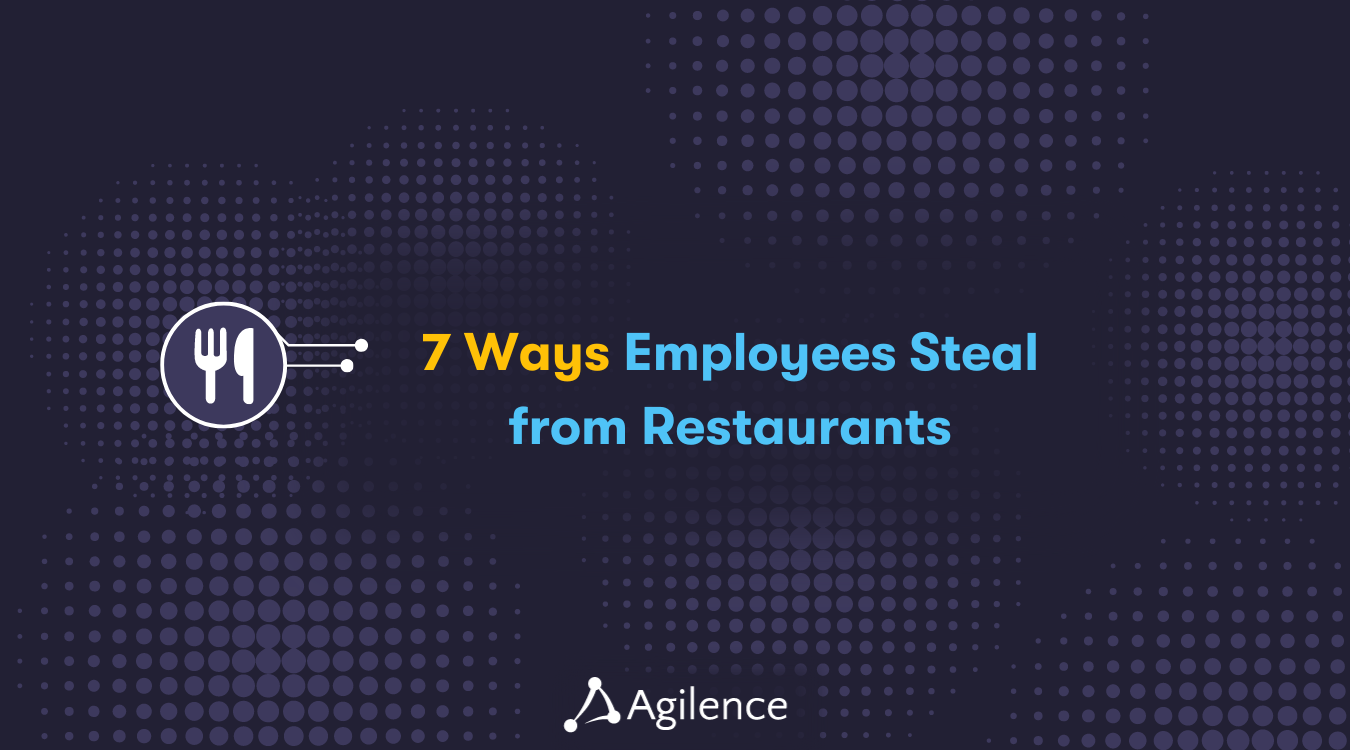Common Types of Restaurant Employee Theft
Restaurant Corey Adams
Corey Adams

The National Restaurant Association estimates that 75% of restaurant inventory shortages are due to internal theft, and QSRs will lose a whopping 7% of sales due to employee theft. Cash-skimming and register voids continue to plague restaurant owners, but new schemes, like loyalty point fraud, are also gaining more traction. As a result of these increasingly devious schemes, restaurant leaders must identify fraud and correct it to protect their bottom line.
Theft that Results in Inventory Shrink
Net profit margins remain slim in the restaurant industry, ranging from 3%-5% for full service and 6%-9% for fast-casual dining. Narrow margins mean that restaurant owners must focus on accurate accounting for all types of inventory loss. This means keeping an eye on inventory shrink-related schemes.
Here are a few things, intentional and not, that can result in inventory shrink include:
- Overpouring occurs when employees pour more alcohol per drink than allocated, resulting in reduced profit margins.
- Food waste happens when employees may fail to report uneaten customer meals or small amounts eaten by the kitchen staff that go unrecorded.
- Stealing or hiding food is when food is prepared for the employee but hidden from sight. Outright theft of food can also occur, requiring managers to keep food locked up with limited access.
- Supply theft includes serving tools, napkins, plastic cutlery, and condiment packets which can all contribute to lower profits.
Currently, restaurant companies are using video cameras to confirm losses while relying on inventory counts to identify potential areas of waste or theft.
Employees who Stash the Cash
As many consumers turn to credit cards and intelligent-pay phone apps to pay for their restaurant tab, there is still a significant percentage of customers who pay in cash. An estimated 60% of transactions under $10 are paid in cash, while less than 30% of US adults claim they make no cash purchases each week. Nevertheless, cash is still king, and restaurants will need to look out for transactions that don’t seem quite right.
Here are some common ways employees may be stealing cash:
- Skimming – Just because a customer places an order doesn’t mean it is entered into the register. For example, some employees will submit the order, take the cash payment from the customer, but never ring up the sale (or ring it up for a lesser amount), depleting inventory with no cash revenue. Similarly, some orders are legitimately rung into the register, but the employee will take small amounts of cash over time.
- Walkouts – Some customers will play “dine-and-dash” and never pay for their food. But the cash register should reflect a high percentage of payments. Employees can claim the food was delivered to the customer, charge the customer, and keep the cash, leaving the manager to adjust the sale based on the employee’s claim.
Internal controls, including closing out the drawer at the end of the shift, will help keep employees honest while tracking actual cash collected versus what was rung into the register. Video cameras can also confirm if any customers did leave the restaurant without paying and instances where the employee may have pocketed the cash.
Challenging the POS System
Fortunately, advanced POS systems find anomalies that can point to potential fraud, helping restaurant managers identify specific employees or items affected by voids, cancellations, transfers, and other transaction manipulations. Once found, they can notify the employee or provide advanced training to correct behavior.
If you’re operating without an advanced POS system, make sure to be mindful of these scams:
- Voids for cash. Voiding an item for sale is one of the top ways employees believe they can outsmart the system. When customers pay in cash, employees have an incentive to ring up the entire amount (ex: $50), collect the whole amount from the customer, void one ordered item (ex. $10), and pocket the cash. Unfortunately, the POS system tracks that only $40 was the total amount ordered and collected.
- Wagon wheel scam. Instead of a void, items can be transferred from one customer bill to another without numerous voids that may cause an alert. The Wagon Wheel scheme occurs when the customer is given the check at the end of the meal and pulls out cash to complete the transaction. The server returns to the register to close out the transaction and get the customer’s change. But before closing the transaction, the waiter opens a new check, transfers the item (often a beverage) from the original check to the new one, and then closes out the tab and pockets the cost of the beverage.
- Voids for non-cash items. As POS systems become more sophisticated, employees become more creative in manipulating that system. Above-average auto-gratuities may signify that employees are attempting to defraud the system. A significant number of voids, cancels, and discounts can point to an employee trying to manipulate the system.
Backroom Fraud that Eats the Bottom Line
It is not just the front-line employees responsible for shrink and theft. Backroom fraud also occurs with managers who also play a significant role.
- Food theft. With limited access to secured areas, managers may be one of the few people with access to food and supply inventory.
- Invoice miscoding. Constant deliveries in a busy restaurant environment can mean the invoices get overlooked, put to the side, or intentionally “lost” from the system. Not entering received food and supplies into inventory creates an open door for managers to walk out the door with items.
- Complex fraud schemes. Ghost employees, fake vendors, and other fraudulent acts will also occur with employees/managers trying to beat the system. The goal is to abscond with cash or goods for personal (or resale) that damage overall profits.
Fortunately, identifying these schemes is getting easier as restaurants use more automated systems to track inventory, integrate with vendor systems, and send alerts to security teams when a red flag is noted. Advanced POS and analytics investments help restaurant owners protect their reputation and profits with an early-warning system that identifies potential managerial fraud.
(Fraudulently) Accumulating Loyalty Points
Recently, a McDonald's employee had posted a viral video receiving over 1.6 million views on TikTok, showing how they manipulated the drive-thru screen to add points to their personal loyalty card from legitimate customer transactions. The employee had managed to accumulate over 40,000 points before getting caught by management.
The growth of loyalty programs and apps means a new path for employee theft and transaction manipulation. Restaurant leaders must monitor potential loyalty fraud as employees learn to accumulate discounts and points that can drain profits over time.
Learn more about the different types of Theft & Fraud.
See the 9 Steps to Building an Efficient Restaurant Loss Prevention Strategy.
Learn more about how to Combat Theft & Fraud.
Related Articles

7 Ways Employees Steal from Restaurants
Employees are the core of any business, but this is especially true in restaurants. It is the service industry after all. Alt...
"What's My Banana?" Applying the Banana Trick to Other Industries
With today’s ever-increasing landscape of automated processes that are being deployed throughout the retail, grocery, restaur....png)
How to Determine if Employees are Skimming Cash
Cash is king when it comes to employee theft. Cash skimming is one of the most common forms of employee theft, also known as ...Subscribe to our blog
Receive free educational resources like exclusive reports, webinars, and industry thought leadership articles straight to your inbox.


